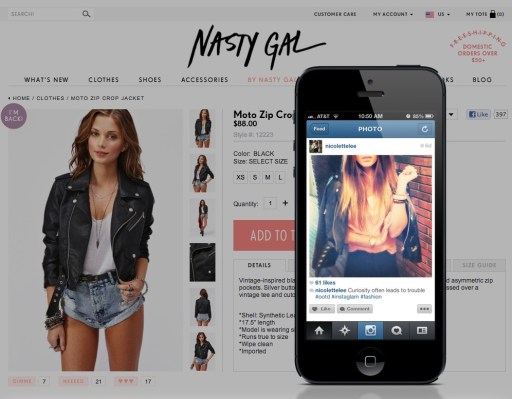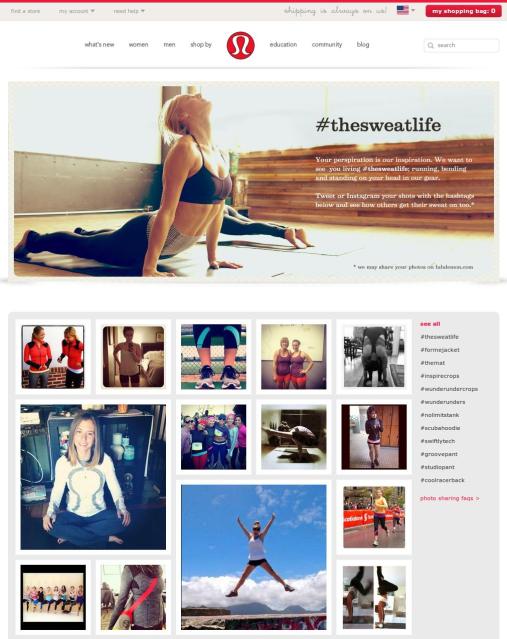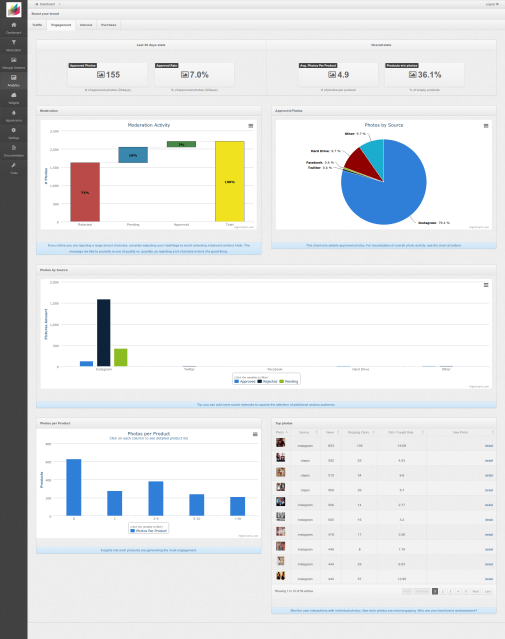The ROI of social media is something of a black box for many e-commerce companies, but New York-based startup Olapic is beginning to change that. The company, which allows brands to collect user-generated photos from services like Facebook, Instagram and Twitter to display on their websites, is now offering an analytics suite to help retailers and brands understand what content works and how it’s affecting conversions.
Olapic was founded by Pau Sabria, Luis Sanz and Jose de Cabo; they met while attending Columbia University, and this past summer the company closed on $1 million in seed funding from Bonobos backer Great Oaks Venture Capital, plus Brad Harrison Ventures, Columbia University’s Lang Fund, and other angels. It’s now cash-flow positive.
At the time of the initial funding, the team said the plan was to expand the software-as-a-service platform beyond the publishers and brands it had previously worked with (which included Condé Nast, Pepsi, NY Daily News, The Baltimore Sun, and various sports teams) to reach those in the e-commerce sector.
Today, Olapic has worked with about 100 companies, a good many of which represent the young, trendier e-commerce companies where something like an on-site Instagram gallery has a better chance to work. To date, Olapic has worked with more than 40 top e-commerce brands, including Lululemon, Baublebar, Nasty Gal, Coach, New Balance, Teva, Guess, Reef, Steve Madden, Threadless and many more.
Retailers are using the service to engage their community via contests and other campaigns, asking fans to hashtag themselves modeling the clothes, shoes or other accessories, for example, or just sharing photos of their favorite products. For one campaign Luluemon ran this past fall (#TheSweatLife), 26,000 consumers responded by posting photos on Instagram with the appropriate hashtag.
Olapic offers the e-commerce companies backend technology to manage the submissions, in order to vet the images before they appear on the site or quickly sort through a selection in order to determine a contest winner, for example. Now, it’s helping the retailers make better sense of the data surrounding those images, too.
With the new analytics suite, retailers can track which photos are getting clicked, what those click-through rates are, what products are trending, what consumers are interested in, conversions, and more.
During its beta, clients saw an increase between 5 and 7 percent in their conversion rates when they displayed user-generated photos on their site, and click-throughs on the most engaging photos was between 15 and 20 percent. The majority (82 percent) of the latter came from Instagram.
Also, the company has found that, on average, the shoppers who interact with a real person’s photo on the site convert at 2 to 3 times higher than the average shopper. This increase can be attributed to the fact that people can finally see what the clothes look like on normal people, instead of the models typically used to showcase the fashions on shopping sites, explains de Cabo, but it’s also related to the fact that those who are browsing the images are probably doing more product research, which indicates an increased intention to purchase.
But there’s something more to it, too. Olapic has also arrived at a time when there’s a shift underway in e-commerce and shopping trends. Brands and retailers want to more directly engage with their audience, and in turn, the audience expects the company to be engaged and responsive.
In addition, younger users – which especially speaks to the 18-30 demographic that favors shopping at many of Olapic’s clients’ sites – have grown up with smartphones and social media, and are now transitioning to communicating through photos, instead of static posts containing just text.
You can see this trend playing out on the larger stage, as well. It’s why Facebook acquired rapidly growing photo-sharing app Instagram, and became fearful enough of private photo-messaging startup Snapchat to ship a clone called Poke. It’s why Pinterest caught many by surprise with its quick ascension, and why Twitter has been moving toward complementing its 140-character text-based posts with richer media like photos and video, even acquiring the video-sharing service Vine along the way. Most recently, it’s why image-heavy (well, GIF-heavy) site Tumblr was snatched up by Yahoo, a company seeking its return to “cool.”
For the youngest demographic in particular, they don’t want the brand marketing to them, they want it to provide a platform that enables participation. Case in point: although Olapic offers a button that allows users to request their photo be taken down, the company says that of the more than 100,000+ photos that have been publicly shared by brands, only one user ever requested a photo be pulled.
Fans are generally excited when a photo is posted, explains de Cabo. “Our partners are telling us they’re receiving a lot of comments and emails that [consumers are] super pysched to be a part of the brand,” he says.
More details about Olapic’s platform are available here.


